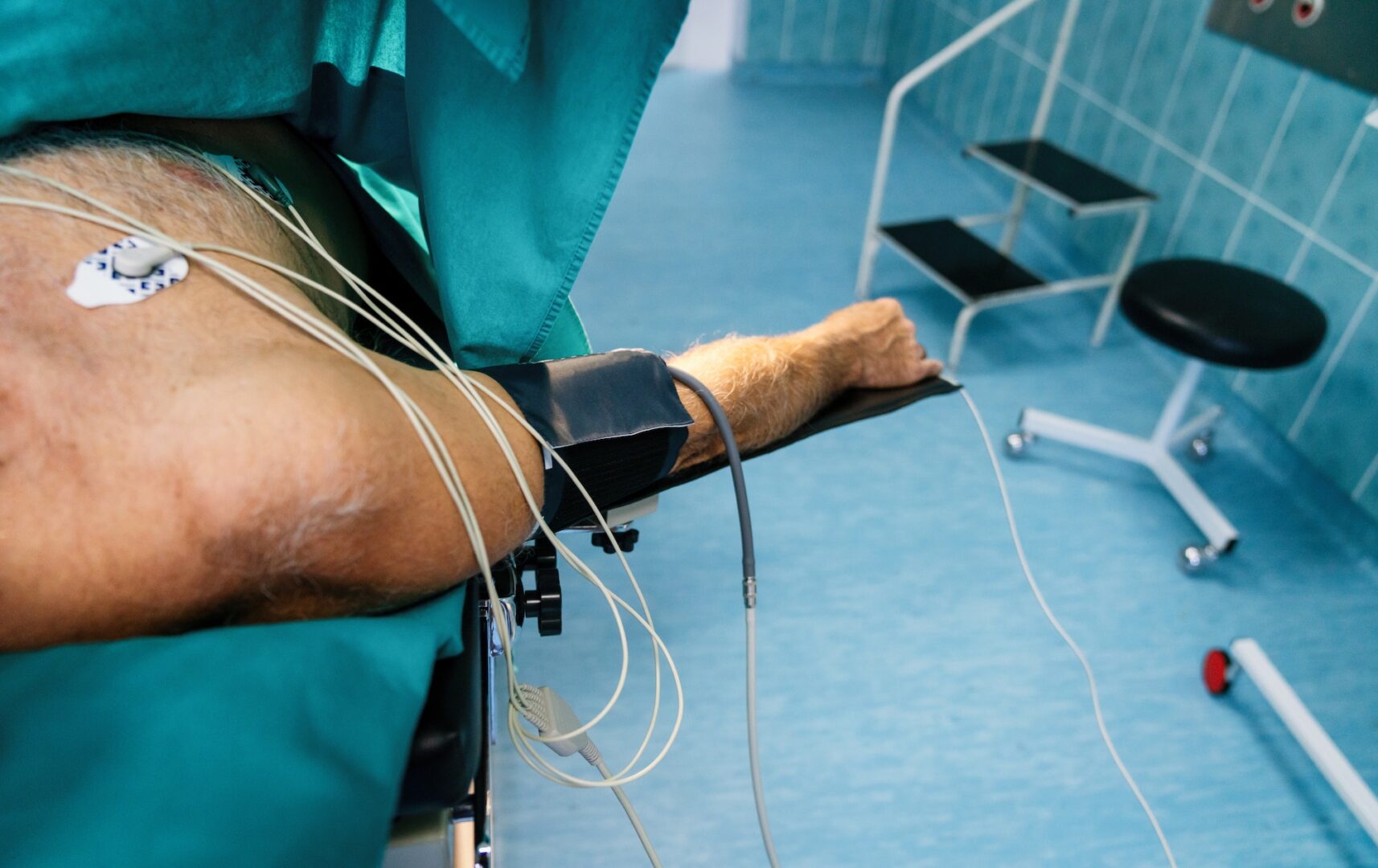The Importance of Return to Work Exams
Return to work exams play a crucial role in ensuring a safe and productive workforce. These exams are designed to evaluate an employee’s physical health and ability to perform their job duties effectively after a period of absence due to illness, injury, or disability. By conducting return to work exams, employers can mitigate potential risks, protect the well-being of their employees, and maintain a high level of productivity.
Ensuring a Safe and Productive Workforce
Return to work exams are essential for promoting workplace safety. These exams help identify any underlying health issues that may pose a risk to the employee or their colleagues. By addressing these issues early on, employers can take appropriate measures to prevent workplace injuries and accidents. This proactive approach not only safeguards the well-being of employees but also contributes to a positive and secure work environment.
Understanding Return to Work Exams
Return to work exams involve a comprehensive evaluation of an employee’s health, including their physical capabilities and medical history. These exams are typically conducted by qualified healthcare professionals who specialize in occupational health. The process may include medical history evaluations, physical examinations, functional assessments, and the development of customized recommendations and treatment plans.
Return to work exams benefit both employers and employees in several ways. Employers gain early detection of health issues, reduced workplace injuries and illnesses, and compliance with legal and regulatory requirements. On the other hand, employees receive personalized health assessments, prompt treatment and rehabilitation, and improved satisfaction and engagement in their work.
By prioritizing return to work exams, employers demonstrate their commitment to the well-being of their workforce and create a culture of safety and care. It is a mutually beneficial practice that ensures employees can return to their job duties with confidence, knowing that their health and safety have been thoroughly assessed.
To learn more about other occupational health services offered by Advanced OccMed, such as pre-employment exams and respirator clearance exams, visit our website.
Benefits for Employers
Return to work exams offer numerous benefits for employers, ensuring the health and productivity of their workforce. Here are some key advantages:
Early Detection of Health Issues
Return to work exams provide an opportunity for early detection of underlying health issues in employees. Through thorough medical evaluations and screenings, healthcare professionals can identify potential health concerns that may affect an employee’s ability to perform their job duties effectively and safely. By detecting these issues early on, employers can take proactive measures to address them, such as providing necessary accommodations or treatment plans. This helps prevent the progression of health conditions and minimizes the impact on employee productivity.
Reduced Workplace Injuries and Illnesses
One of the primary goals of return to work exams is to assess an employee’s fitness for duty. By evaluating an employee’s physical capabilities, medical history, and functional assessments, healthcare professionals can identify any potential risks or limitations that may contribute to workplace injuries or illnesses. With this knowledge, employers can implement appropriate preventive measures, such as ergonomic adjustments, safety protocols, or targeted training programs, to reduce the occurrence of work-related injuries and illnesses. This not only safeguards the well-being of employees but also reduces productivity losses and workers’ compensation claims.
Compliance with Legal and Regulatory Requirements
Return to work exams play a crucial role in ensuring compliance with legal and regulatory requirements. Depending on the industry and job role, certain occupations may have specific health and fitness standards that employees must meet. Return to work exams help employers adhere to these standards and fulfill their obligations by verifying that employees are physically capable of performing their job responsibilities safely. This compliance not only protects the well-being of employees but also mitigates potential legal liabilities for employers.
By implementing return to work exams, employers can proactively manage the health and well-being of their workforce. Early detection of health issues, reduced workplace injuries and illnesses, and compliance with legal and regulatory requirements are just a few of the many benefits that employers can reap from these comprehensive examinations.
For more information on other occupational health services, such as DOT physicals for commercial drivers or pre-employment exams, visit Advanced OccMed.
Benefits for Employees
Return to work exams offer several benefits for employees, ensuring their health and well-being as they transition back to work. These exams provide personalized health assessments, prompt treatment and rehabilitation, and contribute to improved employee satisfaction and engagement.
Personalized Health Assessments
Return to work exams involve comprehensive assessments of an employee’s health status. These assessments are tailored to the individual, taking into consideration their medical history, current condition, and the nature of their work. By conducting personalized health assessments, healthcare professionals can identify any underlying health issues or concerns that may impact the employee’s ability to return to work safely and productively.
During these assessments, healthcare providers may conduct various tests, such as blood pressure measurements, vision tests, and screenings for specific medical conditions. This thorough evaluation helps ensure that employees are fit to resume their work responsibilities and minimizes the risk of exacerbating any existing health conditions.
Prompt Treatment and Rehabilitation
Return to work exams facilitate early detection and intervention for any health issues that may hinder an employee’s ability to return to work. By identifying potential problems early on, healthcare providers can recommend prompt treatment and rehabilitation plans tailored to the individual’s needs. This proactive approach promotes faster recovery and minimizes the likelihood of further complications.
Employees benefit from receiving appropriate medical care and support, helping them regain their physical and mental well-being. Treatment plans may include medication, therapy, exercises, or referrals to specialists, depending on the specific needs of the employee. This comprehensive approach ensures that employees receive the necessary care to facilitate a smooth transition back to work.
Improved Employee Satisfaction and Engagement
Return to work exams demonstrate an employer’s commitment to the health and well-being of their employees. By providing these exams as part of the return-to-work process, employers show their dedication to creating a safe and supportive work environment.
Employees who feel valued and supported by their employers are more likely to experience higher job satisfaction. Additionally, when employees have access to personalized health assessments and prompt treatment, they can experience a smoother recovery process. This, in turn, can lead to increased engagement and productivity upon their return to work.
Investing in the health and well-being of employees through return to work exams not only benefits the individuals but also contributes to a positive work culture and a more productive workforce.
Return to work exams are vital for employees as they ensure personalized health assessments, provide prompt treatment and rehabilitation, and contribute to improved employee satisfaction and engagement. By prioritizing the well-being of employees, organizations can create a work environment that fosters productivity, loyalty, and overall employee well-being.
The Return to Work Exam Process
Return to work exams play a vital role in ensuring the health and well-being of employees as they transition back into the workforce. These exams involve a comprehensive evaluation of an individual’s medical history, physical condition, and functional abilities. Let’s take a closer look at the different components of the return to work exam process.
Medical History Evaluation
The first step in the return to work exam process is a thorough medical history evaluation. This involves gathering information about the individual’s past medical conditions, injuries, surgeries, and any ongoing health concerns. By understanding an employee’s medical history, healthcare professionals can identify potential health risks or conditions that may impact their ability to perform job-related tasks.
During this evaluation, individuals may be asked to provide information about their current medications, allergies, and any relevant family medical history. This information helps healthcare providers tailor the return to work exam to the specific needs of each individual.
Physical Examination and Functional Assessments
Following the medical history evaluation, a physical examination is conducted to assess the employee’s overall health and physical abilities. This examination may include measurements of vital signs, such as blood pressure and heart rate, as well as general observations of the individual’s physical condition.
In addition to the physical examination, functional assessments are performed to evaluate an employee’s ability to perform job-specific tasks. These assessments may involve testing strength, range of motion, coordination, and other physical capabilities required for the job. The results of these assessments help determine whether an individual is physically fit to return to work or if further medical intervention or accommodations are necessary.
Customized Recommendations and Treatment Plans
Based on the findings from the medical history evaluation, physical examination, and functional assessments, healthcare professionals develop customized recommendations and treatment plans. These recommendations may include modifications to job duties, workplace accommodations, or specific medical interventions that can help employees safely and effectively resume their work responsibilities.
The treatment plans may involve referrals to specialists, physical therapy, or other rehabilitative services, depending on the individual’s needs. The goal is to provide employees with the necessary support and resources to optimize their health and well-being while ensuring a smooth transition back to work.
By following the return to work exam process, employers can gain valuable insights into the health status and capabilities of their workforce. This enables them to make informed decisions regarding job assignments, accommodations, and preventative measures to create a safe and productive work environment.
The return to work exam process is particularly beneficial for industries such as construction and manual labor, healthcare and emergency services, and office and administrative settings. Each of these industries has unique physical demands and potential risks that require careful assessment and management to ensure the well-being of employees.
Industries that Benefit from Return to Work Exams
Return to work exams are beneficial for a wide range of industries, helping to ensure the health and safety of employees as they transition back to work. Let’s explore three industries that particularly benefit from these exams: construction and manual labor, healthcare and emergency services, and office and administrative settings.
Construction and Manual Labor
In industries that involve physically demanding work, such as construction and manual labor, return to work exams play a crucial role in safeguarding the well-being of employees. These exams assess an individual’s physical capabilities, ensuring they are fit to perform the tasks required in their respective roles. By evaluating their strength, flexibility, and overall physical condition, any potential risks or limitations can be identified early on. This helps to reduce the likelihood of workplace injuries and accidents. Return to work exams also provide an opportunity to educate employees on proper lifting techniques, ergonomics, and other injury prevention strategies, further promoting a safe working environment.
Healthcare and Emergency Services
The healthcare and emergency services sectors require employees to be in optimal health to provide critical care and respond to emergencies effectively. Return to work exams are particularly beneficial in these industries to ensure that healthcare professionals and emergency responders are physically and mentally ready to handle the demands of their roles. These exams assess various aspects, including physical fitness, medical conditions, mental well-being, and immunization status. By identifying potential health issues early on, healthcare and emergency service providers can take appropriate measures to address them, ensuring the safety of both the employees and the patients they serve.
Office and Administrative Settings
While office and administrative settings may not involve physically strenuous work, return to work exams are still valuable for the well-being of employees. These exams focus on evaluating general health, assessing any pre-existing conditions, and identifying any limitations that may affect work performance. By understanding an employee’s health status, employers can make necessary accommodations, if required, to support their return to work. Return to work exams also offer an opportunity to provide personalized health assessments and recommendations for preventive care. This proactive approach can contribute to improved employee satisfaction, engagement, and overall well-being.
Return to work exams are a valuable tool across various industries, ensuring that employees are physically and mentally prepared to resume their duties safely and efficiently. By conducting these exams, businesses can create a healthier and more productive work environment, leading to reduced absenteeism, increased employee morale, and improved overall organizational performance.
The Return to Work Exam Process
Medical History Evaluation
Physical Examination and Functional Assessments
Customized Recommendations and Treatment Plans
When it comes to return to work exams, a systematic and comprehensive approach is followed to ensure the health and safety of both employees and employers. The return to work exam process typically consists of three key steps: medical history evaluation, physical examination and functional assessments, and customized recommendations and treatment plans.
Medical History Evaluation
During the return to work exam, a thorough medical history evaluation is conducted. This involves gathering detailed information about the employee’s past and current medical conditions, including any previous injuries, illnesses, surgeries, or chronic health conditions. The medical history evaluation helps to identify any potential health issues or concerns that could impact the employee’s ability to return to work safely.
Physical Examination and Functional Assessments
Following the medical history evaluation, a physical examination is performed by a qualified healthcare professional. This examination may include assessments of vital signs, such as blood pressure and heart rate, as well as a general evaluation of the employee’s overall physical health.
In addition to the physical examination, functional assessments may be conducted to determine the employee’s ability to perform specific job-related tasks. These assessments evaluate the employee’s strength, flexibility, mobility, and coordination, ensuring that they are capable of safely carrying out their job responsibilities without risk of further injury.
Customized Recommendations and Treatment Plans
Based on the findings from the medical history evaluation and physical examination, customized recommendations and treatment plans are developed for each employee. These recommendations may include modifications to the work environment, adjustments to job duties, or specific accommodations to support the employee’s return to work.
In some cases, further medical treatment or rehabilitation may be recommended to facilitate the employee’s recovery and ensure a successful return to work. This may involve referrals to specialists, physical therapy, or other appropriate interventions to address any underlying health issues.
By following this structured return to work exam process, employers can effectively assess the health status of their employees and make informed decisions about their ability to return to work safely. Additionally, employees benefit from personalized evaluations, prompt treatment, and tailored recommendations that support their health and well-being in the workplace.
It’s important for businesses across various industries to prioritize return to work exams to ensure a safe and productive workforce. Whether it’s in construction and manual labor, healthcare and emergency services, or office and administrative settings, return to work exams play a crucial role in safeguarding the health and well-being of employees.










